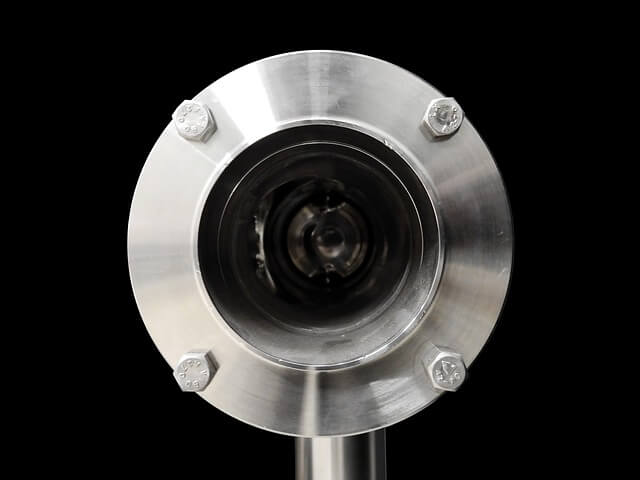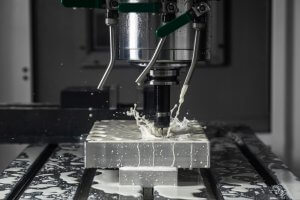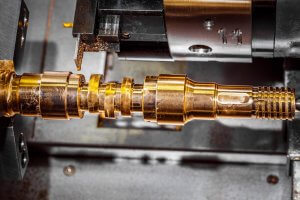Introduction to Alloy Steel’s Strength
Alloy steel is a versatile material composed of iron with various alloying elements that enhance its mechanical properties, such as strength, hardness, toughness, and wear resistance. The precise attributes of the alloy vary depending on the combination of elements such as chromium, nickel, molybdenum, manganese, vanadium, and silicon among others. Each of these components contributes uniquely: chromium improves corrosion resistance, nickel increases toughness, molybdenum enhances strength at high temperatures, and so forth. This means that alloy steels can be specifically tailored to meet the performance requirements of different industrial applications ranging from construction and automotive industries to heavy machinery and aerospace sectors.
Composition of Alloy Steel
The foundation of alloy steel’s strength lies in its diverse composition. Primarily, the carbon content, usually between 0.02% and 2.14%, fundamentally influences the steel’s hardness and tensile strength. Adding chromium enhances corrosion resistance while contributing to hardness and tensile strength, typically ranging from 0.5% to about 20%. Nickel is also incorporated, up to 5%, for increased toughness and strength at both high and low temperatures. Molybdenum, found in quantities around 0.15%-0.25%, further adds to the hardening effect and improves weldability and formability. Each element in alloy steel performs a specific role to amplify certain properties such as ductility, wear resistance, or ability to undergo heat treatment, culminating in a versatile material capable of enduring various challenging conditions.
Types of Alloy Steel and Their Strength Characteristics
Alloy steels are differentiated by their composition, which directly influences their strength characteristics. High-Strength Low-Alloy (HSLA) steels, for instance, provide a fine balance between strength and ductility due to the precise integration of elements like chromium, molybdenum, and vanadium. These steels are often employed in automotive frames and wheels where high-stress resistance is necessary without adding significant weight. Stainless Steels, fortified with chromium, offer remarkable strength alongside unparalleled corrosion resistance, making them ideal for medical instruments or kitchenware. Tool & Die Steels include tungsten, molybdenum, and other alloying elements that deliver outstanding hardness and temperature resilience, critical for cutting and shaping metals under rigorous conditions. By selecting the appropriate alloy steel type such as HSLA for lightweight but strong components or tool steels for durable machining parts, engineers can leverage material strengths to meet specific application demands.
Mechanical Properties of Alloy Steel
Alloy steel is renowned for its high tensile strength, which varies depending on the alloying elements used and their concentrations. Generally, tensile strengths can range from around 758 MegaPascals (MPa) in some low-alloy steels to upwards of 2,000 MPa in certain high-strength alloys. Impact resistance and toughness are also key attributes; these materials are capable of absorbing significant energy before fracturing, making them ideal for use in demanding environments subject to sudden forces or shocks. The fatigue strength of alloy steel contributes directly to its longevity; this denotes the material’s ability to withstand repeated loading cycles without failing prematurely. For instance, a typical medium-carbon alloy steel might exhibit a fatigue limit at about half its tensile strength, ensuring durable performance over an extended service life under cyclic stress conditions.
Heat Treatment Processes and Effect on Alloy Steel Strength
The manipulation of alloy steel’s microstructure through heat treatment significantly enhances its strength and mechanical properties. Quenching involves heating the steel to a high temperature followed by rapid cooling, typically in water or oil, which increases hardness and strength. Annealing, on the other hand, heats the steel until it reaches a specific temperature before slowly cooling it down; this softens the metal for improved workability but may reduce its overall strength. Tempering is then often employed after quenching to reduce brittleness; the steel is re-heated to a lower temperature and held there for a set period of time, strengthening the material by allowing firmer yet less brittle molecular structures to form. Each process strategically rearranges the internal structure of alloy steel, optimizing it for different applications: quenched steels offer higher strength, while annealed steels provide better ductility with some trade-off in strength, and tempered steels achieve a balance between toughness and hardness.
Contemporary Uses of Alloy Steel Based on Its Strength
The remarkable strength of alloy steel has propelled its adoption across various critical industries. In construction, it fortifies the backbone of high-rise buildings through its incorporation into structural beams and rebars which demand resilience under immense loads. The automotive industry leverages this robust material in engine components and safety structures like roll cages that withstand substantial stress during accidents. Aerospace applications, where both durability and weight are paramount, extensively utilize alloy steel in landing gear systems and airframe structures to endure the strenuous conditions of flight and atmospheric re-entry. An emblematic case study highlighting the performance of alloy steel is the design of earthquake-resistant structures. Engineers use dynamic analysis and full-scale shake table tests to assess and improve the strong yet flexible alloy steel frameworks ensuring they can absorb seismic forces effectively, ultimately safeguarding human lives and infrastructure investments in seismically active regions.
Comparisons With Other Metals
In the metallurgical landscape, alloy steel stands out for its enhanced strength compared to carbon steel, aluminum, and other non-alloy steels. Carbon steel, though durable and cost-effective, lacks some of the specialized properties that alloying elements confer upon alloy steels, such as increased corrosion resistance or improved high-temperature strength. On the other hand, while aluminum is lighter in weight and exhibits good corrosion resistance, it generally cannot match the tensile strength and toughness provided by alloy steel. Non-alloy steels – plain-carbon steels without significant alloying elements – tend to be more malleable but less robust in demanding applications where enhanced mechanical properties are essential. As a result, engineers often choose alloy steel when they require a material that provides an optimal combination of strength, durability, and performance under stress.
Advancements in Alloy Steel Production
Innovation in the field of metallurgy has markedly enhanced the strength and quality of alloy steel. Breakthroughs such as microalloying techniques have allowed for refined grain structures, improving both toughness and tensile strength. Computer-controlled thermomechanical processes now enable precise heat-treatment stages that enhance durability without compromising flexibility. To illustrate, vanadium, titanium, and niobium are often integrated into low-carbon steels to obtain superior yield strengths with minimal weight increases. Researchers continue exploring new alloy compositions and production methods, hinting at a future where nanotechnology will play a pivotal role in crafting even stronger and more versatile alloy steels, potentially revolutionizing areas like aerospace, automotive, and construction industries.
Factors Contributing to the High Strength of Alloy Steel
The considerable strength of alloy steels is primarily attributed to their chemical composition where elements like chromium, nickel, vanadium, and molybdenum are added. These additions enhance tensile strength by facilitating the formation of strong metallic bonds and altering the microstructure during heat treatment processes such as quenching and tempering. For example, chromium adds hardness and tensile strength while resisting oxidation, increasing both physical durability and corrosion resistance which indirectly contributes to the overall structural integrity. Processing techniques like cold working can further amplify an alloy steel’s strength by producing dislocations within the crystal lattice structure, thus making it harder for those layers to move over one another – effectively reinforcing its already formidable properties.
Related Posts
- Alloy steel vs stainless steel
Introduction to Alloy Steel and Stainless Steel An alloy is a combination of metals or a metal mixed with one or more elements, engineered to enhance material properties such as…
- Alloy steel vs stainless steel
Introduction to Alloy and Stainless Steels Alloys are a blend of metals where the main component is enhanced by additional elements to improve its properties. The distinction between alloy steel…
- low alloy steel vs stainless steel
Introduction to Metal Alloys Metal alloys consist of a mixture of metals or a metal and another element, engineered to enhance certain properties such as strength, ductility, corrosion resistance, or…








